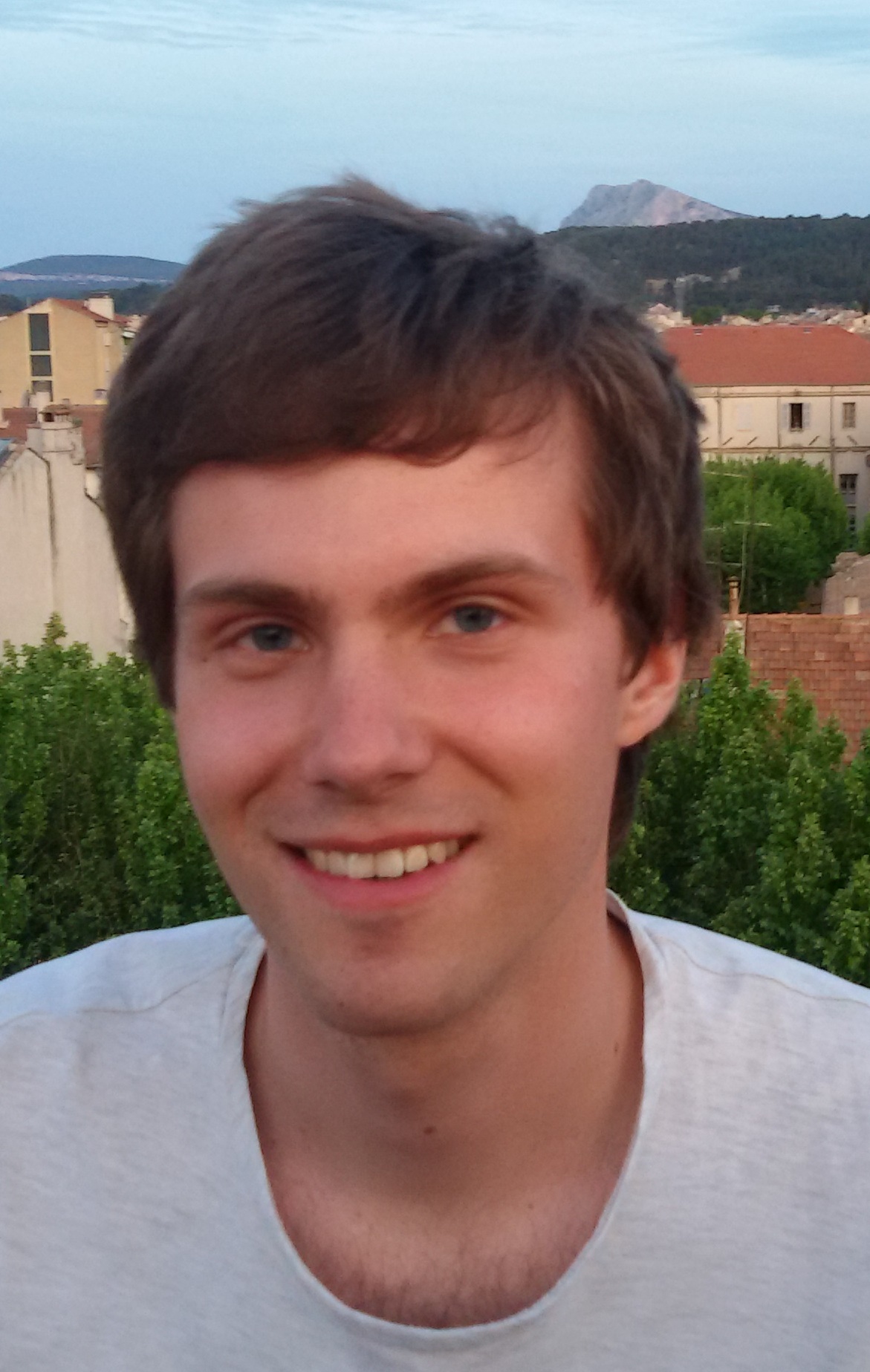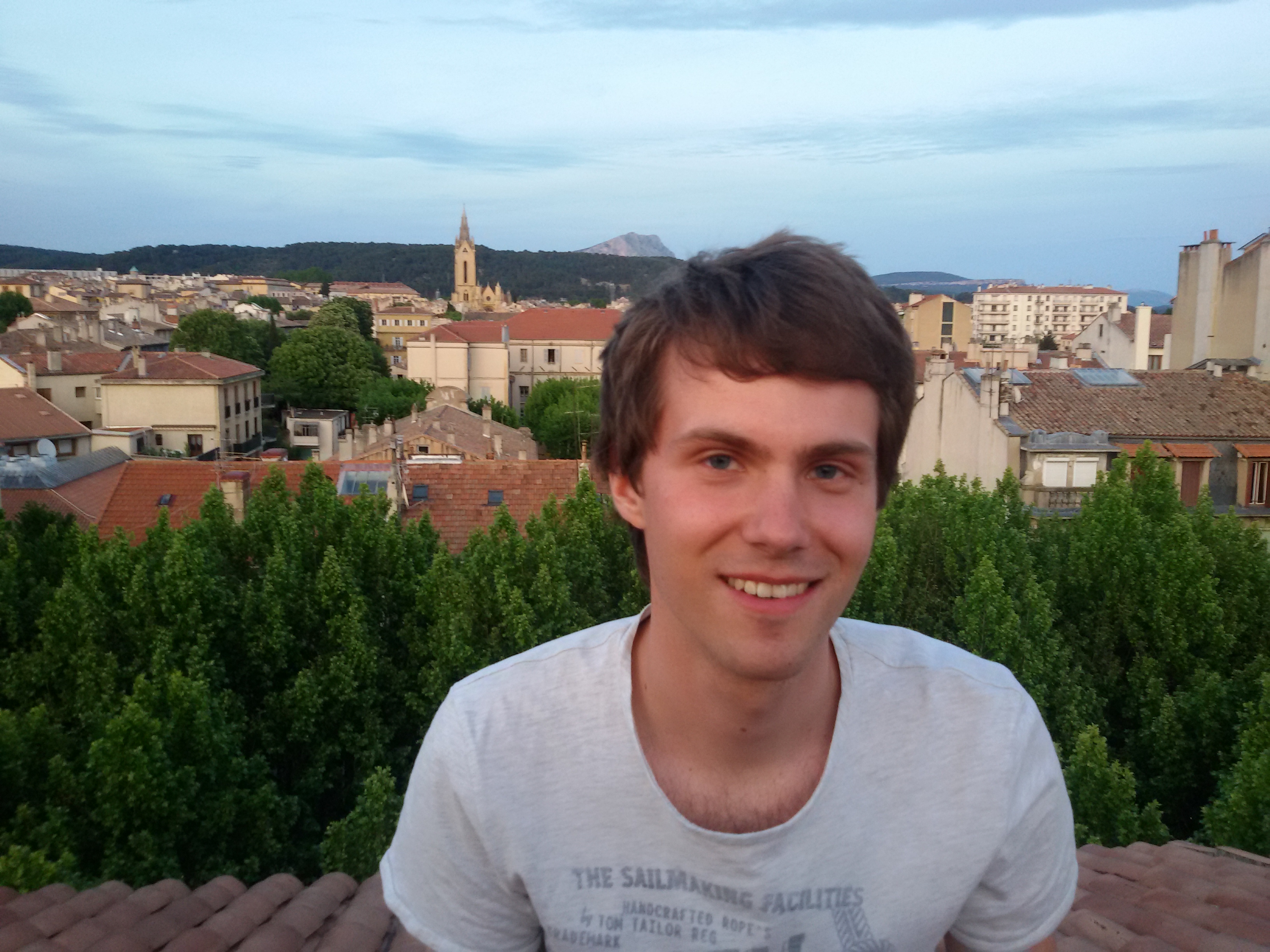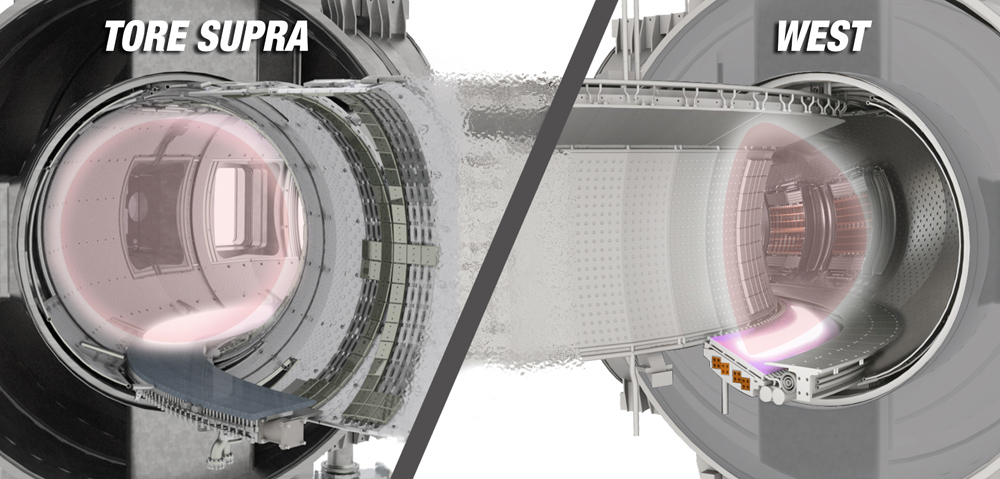Master Internship at IRFM in Caderache, France
Reported by Oliver Linder. Powered by FuseNet.
 As part of my Master studies in 'Science and Technology of Nuclear Fusion' at Eindhoven University of Technology, I did a 10-week long internship on gyrokinetic modelling at the 'Institut de Recherche sur la Fusion par confinement Magnétique' (IRFM), which is part of CEA Cadarache, located in the magnificent Provence in direct neighbourhood of ITER.
As part of my Master studies in 'Science and Technology of Nuclear Fusion' at Eindhoven University of Technology, I did a 10-week long internship on gyrokinetic modelling at the 'Institut de Recherche sur la Fusion par confinement Magnétique' (IRFM), which is part of CEA Cadarache, located in the magnificent Provence in direct neighbourhood of ITER.
IRFM is home of Tore Supra, the first superconducting tokamak in the world. Currently, Tore Supra is being upgraded to WEST, the W-tungsten Environment in Steady-state Tokamak, for the investigation of plasma facing components made of tungsten. I had the luck of arriving just at the start of the 1st WEST Experiment Planning Meeting on April 18th. Although WEST is not related to the topic of my internship, I was able to attend interesting talks about the capabilities of this device and I even had the opportunity to take a close look at the machine and its divertor elements, since they were being delivered and inspected around this period.
Besides experimental investigations, research at IRFM also focuses on theoretical work and modelling of tokamak plasmas. A tool for the study of turbulence driven transport developed at IRFM is the quasilinear gyrokinetic code QuaLiKiz. As opposed to other gyrokinetic codes, such as GENE, GKW, GYRO, and GS2, results for energy, particle, and momentum fluxes are obtained in a matter of minutes instead of hundreds of hours, making QuaLiKiz an excellent tool for the study of temperature and density profiles in experimental devices. However, achieving this gain in computation time is only possible by making several assumptions and approximations to the original physics. For operating conditions of present day devices, this approach was found to yield similar fluxes as results obtained with more complete codes. Yet, during the study of conditions with flat or reversed profiles of the safety factor, relevant for hybrid scenarios, rampup and ramp-down phases, as well as for ITER and DEMO operation, significant disagreement was observed. Analyzing the parameter range where this discrepancy occurs, as well as investigating possible reasons for this behavior was the goal of my project.
The practical work consisted of delving into linear gyrokinetic theory, running calculations with QuaLiKiz and linear GENE on the NERSC supercomputer Edison, and comparing characteristics of the instability calculations, such as the threshold gradients above which instabilities set in or the growth rates of instabilities for changing values of the ion temperature gradient. Using the results of my investigation, the authors of the code QuaLiKiz now have a clearer view on this issue of the discrepancies and several indications at hand where further analysis might resolve them.

During this internship I learned a lot about very interesting physics and how gyrokinetic theory can be applied in practical codes for the analysis of experimental data of fusion devices. Working with both codes on a Linux based system was very fascinating and it gave me valuable insights into the field of tokamak plasma modelling. My supervisors Jonathan Citrin and Clarisse Bourdelle were always motivated to discuss physics, numerical aspects, investigative approaches, results of my work and beyond, thus being a key part of the success of my internship. I'd also like to express my sincere gratitude towards FuseNet for for supporting me during this internship, as this was a precious experience for me and it helped me to get a clearer view on my future in fusion.

